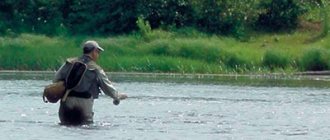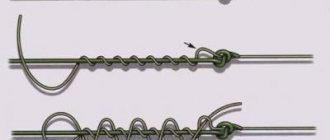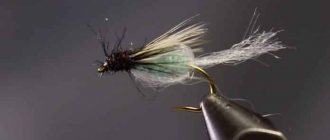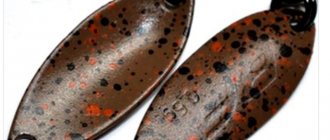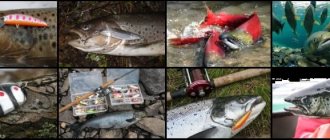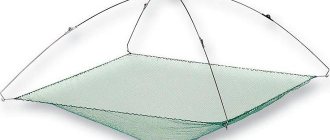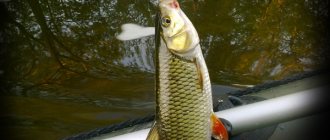Many even professional fishermen perceive the new names of such gear as bombarda (sbirulino) with some surprise. Although from childhood they are well acquainted with the process of fishing with a bubble. So, in essence, a bombard is a specifically loaded float made of transparent plastic, due to its low visibility in the water and the variety of artificial baits.
To catch in the dark, they use a bombard that glows, or rather, luminescent. The method of catching with a bombard allows you to do wiring both in the upper layers of water and at depth.
The chub is one of the most powerful river predators. To catch chub, real fishermen use various baits: small frogs, worms, various insects, and greens. The large mouth of a chub can capture the bait entirely, and then crush the food with its teeth.
The most suitable time for chub fishing is, without a doubt, spring. During this period, the chub, like many other predators, begin their recovery after winter.
Chub fishing in summer is difficult due to the fact that the fish become more careful and selective in their choice of food. In the spring, vigilance gives way to hunger, which forces the chub to rush at everything it comes across.
Tackle
The choice of fishing rod mainly depends on the future fishing location. For example, if you are going to fish in an open area, you can use a four-meter fishing rod. But it will be extremely inconvenient when fishing on small rivers with banks overgrown with bushes.
In this case, it is advisable to use a two-meter fishing rod with a spinning reel. Therefore, it is better if the area where you are going to fish is familiar to you!
Important! In order not to miss a bite, you need to have a very flexible and thin tip of your fishing rod.
Required fishing rod design when fishing for chub using a bombard:
- Rod;
- Spinning reel for 2000;
- Braided line (main) 0.12 mm;
- Fluorocarbon leash line up to 0.18 mm thick;
- Hooks No. 8-12.
When choosing hooks, you need to be guided by the expected size of future trophies.
Where to look for chub?
Of course, there is hope for fish and bites, but the dull picture of lifeless coastal vegetation, just freed from snow, does not inspire optimism. The water is not particularly cloudy, but not entirely clear either, its level is higher than usual. We immediately cross out riffles and places with fast currents from promising places. According to our logic, the chub should stand in quiet places, in holes, on coastal shallows under overhanging trees. Of course, we are considering fishing near the bottom with slow retrieve. There is no smell of insects flying out yet - the chub has nothing to do on the surface.
Leashes
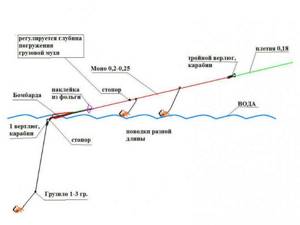
It is best to prepare leashes in advance. One of the simple ways is when up to three meters of fishing line is tied to a triple swivel, at the end of which a fly fishing fastener is attached, and while fishing, near a pond, we insert the main fishing line into the bombard and tie the leash.
We hook the bait onto the clasp, and your tackle is ready! We also prepare a lot of leashes ahead of time, with fishing line of different diameters, and wind them on a reel. Next, we’ll talk about the length of the leash.
According to popular opinion among fishermen, it is believed that the longer the leash, the less scared the fish is, which means it bites more often.
This may be true, but in some cramped conditions, fishing simply begins to spoil your mood. So don't go to extremes, and if the length of the leash makes you uncomfortable, shorten it.
When everything is getting ready for hibernation

However, late autumn came and the flight of insects stopped, or almost stopped. Favorite chub delicacies – chafers and grasshoppers – have gone underground. The river and all nature prepared for winter hibernation. What should we, fishermen who are passionate about fishing with artificial flies, do? It’s still too early to close up your gear and equipment before spring, and fishing is becoming less comfortable every day due to the drop in temperature. And the fish are also preparing for winter, and their bite is becoming more and more capricious. But it’s better to be one of those who do something, even if it doesn’t work out, than one of those who don’t do it and then regret not trying. Indeed, it is always better to do something than nothing, fearing that you will do it wrong. I think that those who live by such principles always do better in life.
Catching chub on a bombard with a spoon
Many experienced fishermen recommend using wobblers for chub, a rotating spoon (spinner), they are considered the most catchy and are suitable for any fishing area.
The color of such bait can be different and selected depending on the weather, and its weight depending on the depth and speed of the water flow.
After the first cast, the chub may bite and leave, so it is important that the bait works immediately.
Therefore, the following requirements are imposed on turntables:
- Ability to start instantly;
- Stable work;
- Promptly change the movement of the gear.
It is important to choose the optimal size of the spinner. If the spoon is very large, it can simply scare the fish.
Precautionary measures
Discretion and camouflage measures are very important. If you have to go into the water, then your task is not to scare the cautious chub. There should be some distance between you and the fish. If you see a chub, it means that he sees you. According to my calculations, 10 meters will be enough for the fish not to notice you as a threat.
When fishing on small rivers or from a boat, you must stand upstream, then the fish will not see you.
If you are fly fishing on a lake, then in calm and clear weather, when the water is calm as a mirror, the fish will not bite. In complete calm you will be noticeable to the fish, and it will not dare to attack the bait, fishing will be unsuccessful. At least a small ripple in the water is necessary.
Since the chub has good eyesight, it is not worth using bright undergrowth when fishing at depth. Based on the same considerations, the leash should be of small diameter. So, it will be invisible to fish at depth. But this is only in depth. On a dry fly, when the leader is high, it is invisible.
Catching chub with a bombard fly
When catching this fish with a fly, with a bombard, in poor visibility, it is necessary to use microtwisters; they must be placed on a hook with a long shank. The dark color of the microtwister is not visible in the dark, so the fish will not see it either. And the fish, having lost its vigilance, will begin to bite.
The main thing is not to miss a bite, and try to throw the bait exactly where the fish has already begun to show its activity, for example, by jumping over the water. After casting, you need to take out the slack in the line, hold the movement of the reel, and wait a little until the bombard sinks to the bottom.
Note. Retrieving must be done slowly and do not forget to twitch the bombard with the tip of the spinning rod, while simultaneously monitoring the bait with the fly in the pauses after the jerk.
Tactics and fishing techniques
The chub bite occurs sharply, accompanied by strong tension on the fishing line. An inexperienced or relaxed fisherman may even have the rod pulled out of his hand. Often a bite is accompanied by a splash on the water surface, but the main way to determine a bite is the tension of the fishing line. If the prey has swallowed the bait, it begins to swim sharply to the side, now the fishing line is pulled, which is a signal for hooking.
Fishing is best done gradually at an average pace. If you pull the fish quickly, there will be an excessive load on the rod, and during the jerk there is a risk of the predator falling off. Fishing too slowly often leads to the tackle becoming entangled in silt, snags and other underwater obstacles. It is better to find the optimal pace by gradually reeling in the fish and letting it get tired. During the fishing process, the rod is held vertically. Large specimens are easier to remove from the water by moving the rod.
Correct casting and guiding of flies
On small rivers and streams, it is better to cast close to the shore, a maximum of 6 m. To cast, you will need a two-meter cord and undergrowth. The short length of the fishing line is due to the complexity of the swing due to adjacent bushes, trees, reeds, etc. It is advisable to cast according to the archer’s method - we take the front sight with the tip pointing upward, pull the cord and take aim through the curved ring. Then we release the front sight.
In small rivers, you must always control the fly, keeping the line taut, otherwise the tackle will get tangled, and when it is released, all the fish will swim away. You can use the rod tip or your other hand to retrieve the line. When casting over long distances, the selection should be carried out constantly, otherwise at the moment of hooking it will not be possible to achieve a sufficiently fast and sharp tension. It is better to recast immediately after removing the bait.
Originally posted 2018-07-20 13:24:49.
Source: rybalka.guru
Bug
To catch a chub using a cockchafer, it is advisable to use a plug rod, as it is durable and the chub is a powerful and strong fish.
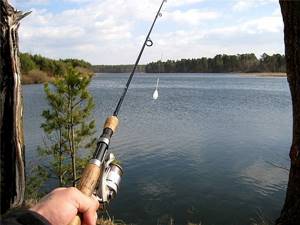
Wonderful places for catching this fish are riffles and other bodies of water with a current. However, in the spring, the chub feeds in shallow water, near the shores, where trees and shrubs grow, and chafers fall from them.
Spring is the peak time for chub fishing, in the morning and evening at sunset. When you arrive at the fishing spot, it is better not to disturb the silence. Since the fish may stand near the shore and loud sounds may frighten him.
To catch fish using the cockchafer, use:
- Sliding sinker;
- Hook no less than No. 8, with a short shank.
Methods for planting the cockchafer:
- With a small number of May beetles, the bait is made in the following way - we thread a fishing line through the beetle, tie a hook and hide it completely in the body of the insect. In this way, several individuals can be caught per beetle.
- With a large number of cockchafers, it doesn’t matter how you attach the beetle, the most important thing is that the hook tip is open. Next you need to be able to make a hook, and if you realize that the fish has been hooked, do not rush to pull it out, let it swim for a while. The chub usually makes a couple of strong jerks, and then gives up.
Lures
Not all baits are suitable. The chub prefers relatively large insects, which, once in the water, most often do not stay on the surface. It is advisable to use wet flies for chub. However, fishing can be successful with dry flies, especially during periods of mayfly or caddis flies. Among all the flies, three large groups can be distinguished:
- Streamers.
- Nymphs.
- Bugs flies.
Most often, imitation flies are used, which in their appearance resemble the insects that the chub feeds on. Fancy flies are rarely effective.
Streamers are flies that imitate fry. It is worth using relatively small baits. The most interesting flies are the Woolibager and Greyharrow type. Fishing with nymphs can also be effective. Nymphs usually imitate various insects and their larvae. It is worth observing what insects live in a given river in order to know which nymphs to use. If such information is not yet available, a matchbrown nymph or similar may bring success. It is better to use a size that is not the largest.
Tandem
One of the most catchy tandems for chub is palmer and mosquito. To avoid overlaps, the palmer must be heavy.
For these purposes, use
- double No. 6 or 8;
- single hook No. 10 or 12 No.
The palmer is tied at the tip of the main line, and the mosquito, tied on a single hook, is attached higher on the other leash. It is preferable to make uniform wiring with a tandem.
Installation of equipment
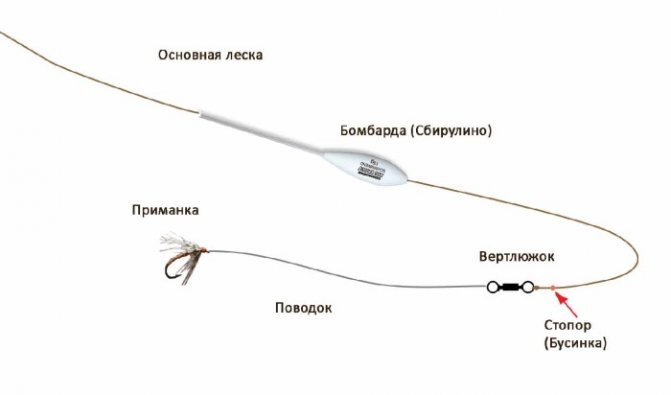
Let's consider the process of installing sbirulino equipment. Nothing complicated:
- We put a locking ring on the main line.
- We pass the main line through the float. The float should be positioned with the widened part down.
- Next to the float we put on the second retaining ring.
- We tie a swivel to the end of the fishing line. More experienced fishermen tie on several swivels to further secure the leash.
- We tie a leash with a hook (fly or other bait) to the swivel.
Some fishermen use an installation scheme where the float is the final part of the equipment, and the leashes are located above the float along the main line.
The following video explains in detail all the components and the method of assembling equipment ready for fishing.
Fishing Features
If you follow some rules, then, in principle, catching a fish such as a chub will not be difficult. Chub is a very cautious and timid fish; therefore, fishing should be done very quietly. The chub reacts immediately to all sounds and vibrations of the earth, since this fish has very good eyesight.
Despite the fact that the chub is a schooling fish, you won’t catch many at a time. After the first fish is caught, all the rest will immediately hide. These individuals can resist strongly, like real fighters! Very often the fishing line breaks and the hooks straighten out.
After you catch a chub, you can safely start looking for a new place, and return to the previous one after a few hours.
Making and purchasing flies
In fishing stores you can buy almost all types of flies. But any self-respecting fly fisherman knows how to make flies with his own hands. Before you make a fly yourself, it’s worth studying the chub’s diet. Perhaps you will be able to do exactly what will catch better than flies made by famous craftsmen. This gives a certain efficiency - with a change in the place of fishing and the diet of the fish, you can quickly make a fly that will catch.
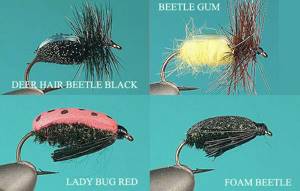
When purchasing, you should avoid fancy flies. Sometimes they bring success, but more often the fish avoid them. The chub, although it does not have exceptional vision, like grayling and trout, is nevertheless able to distinguish the object of food from something incomprehensible, even in muddy water.
Types and types of sbirulino floats
The choice of a specific type of float depends on the layer being fished in the water column:
- Sinking floats. They quickly dive into the water to the desired depth.
- Slowly sinking floats. Allows you to present the bait while falling, bringing the naturalness of the bait diving.
- Floating floats. Designed to supply bait in the surface layer of water.
The float's weight can be either its own, that is, the weight of the float itself, and the weight that balances the buoyancy force acting on the float. Using such floats, you can play with loading, setting the speed of immersion and rise of the bait, or setting neutral buoyancy.
Depending on the type of shipment, floats can be:
- natural loading, that is, filling the float container with water before fishing;
- with shipping with a lead weight inside the float.
In this case, depending on the location of the load, the floats are divided into:
- Classic bombards. The weight is located at the bottom of the float. The float plunges into the water along an almost vertical trajectory.
- Bombards Moretto. The load is distributed along the entire length of the float. Immerses in water along a flatter trajectory.
- Bombards Competition. The load is located at the center of gravity of the unloaded float. This allows you to make the equipment more sensitive and give it a varied game by twitching the float.
- Bombarda Match. A weight with an elongated shape and location at the top of the float. The trajectory during wiring turns out to be horizontal.
- Bombarda Magic. The weight is placed at different edges of the float. Gives the equipment high sensitivity. The horizontal position of the float in the water immediately indicates the moment of the bite.
How to catch a lot of fish?
To make a fly for perch, you should take the following materials:
- hook number seven;
- one bright feather;
- a small bundle of woolen threads up to four centimeters long;
- nail polish;
- nylon rope.
- Wrap the thread around the hook several times.
- Attach the feather by its tip to the hook using nail polish or regular glue.
- Attach wool threads.
- After the varnish has dried, use a needle to fluff the fly.
- If the threads turn out to be very long, then they need to be trimmed a little with scissors.
And here's what you need to know: Fishing for crucian carp in July using a spinning rod
Fishing gives pleasure in its process - each of us knows this. But, besides this, we always want to get results from fishing - to catch not three perch, but a dozen kilogram pikes - what a catch! Each of us dreams of this, but not everyone can do it.
How long has it been since you had a really BIG CATCH? When was the last time you caught TEN HEAVY PIKE/CARP/BREAM?
A good catch can be achieved (and we know this) thanks to good bait. It can be prepared at home or bought in fishing stores. But stores are expensive, and to prepare bait at home, you need to spend a lot of time, and, to be fair, homemade bait does not always work well.
You know that disappointment when you buy bait or prepare it at home and only catch three or four bass? Of course it's familiar. So maybe it’s time to use a truly working product, the effectiveness of which has been proven both scientifically and in practice on the rivers and ponds of Russia?
Of course, it is better to try once than to hear a thousand times. Moreover, now is the season! A 50% discount on your order is a great bonus!
Order Fishhangri soon!
Since the fly is a bait that the fish constantly swallows, prepare a sufficient number of artificial insects. Experienced fishermen always have a large supply of different flies in stock. Usually 15-20 pieces are enough for one fishing trip, it depends on the intensity of the bite and the time spent on the pond.
Grayling
The grayling fishing season begins in the spring, at the end of May. The bait is carried out in two ways: either the fly floats freely with the flow or, conversely, it is pulled towards the shore. These movements of the fly imitate the behavior of insects in early summer. At this time of year, fishing is better with wet flies, as there are very few insects flying on the surface.
Often, when fishing for grayling, a dry fly is tied next to a wet one. This tandem allows you to see the bite. A dry fly, with its bouncing, will show you a bite, which is difficult to determine when a wet fly floats freely with the current.
In general, biting grayling is a special topic for fisherman. In order to see it, fishermen resort to various tricks. For example, they make a signal winding at the end of the cord with white thread or put a plastic tube on it. Those who are just starting to master the basics of fishing will need to learn how to identify grayling bites.
With the onset of summer comes the time for dry flies. A massive emergence of mayflies and other insects begins.
And here's what you need to know: Wobblers for pike perch for trolling
If you managed to catch this moment, then the catch will be excellent. Fishing with dry bait will only be advisable if there are flying insects and a certain air temperature.
Below 10 degrees, insects stop flying. Dry small flies should be set high on the hook and have a brush.
Grayling prefer softer flies with yellow or red bellies. Nymphs in muddy water are clearly visible to fish if they are pink or orange. But in clear water such bright colors will only scare away the grayling. If you haven’t yet picked up your catchy fly, then you need to remember that grayling still loves small flies.
The slower the current, the more similar the fly should be to its prototype. Moreover, we must not forget that the fish looks at the bait from the water, so it is especially important that the silhouette is as realistic as possible.
Especially in fast water, the fish does not look closely at the bait; it manages to see the silhouette. In order to eliminate distortion, you need to choose an artificial front sight that is one size smaller than it actually is.
It is very difficult to choose the horizon for catching grayling with a nymph, since they fish with a wet fly underwater and it is not known where the insects are. Perhaps grayling collects larvae from stones or catches insects in the middle horizons.
Asp are actively caught with a fly beginning in mid-summer. For asp, the most catchy bait is considered to be the wabik, invented many years ago. White feathers or fur are wound on a double or triple hook with thread. In order for this wabik to better float on the water, a foam ball is attached to it.
How to make a bombard with your own hands
The design of the bombard is quite simple, so it is easy to make it yourself. This float consists of two main parts:
- bodies;
- antennas.

To increase the mass of the structure, lead weights must be placed inside the body.
Any sufficiently strong tube, preferably plastic, can be used as an antenna. Suitable for this:
- pen refill – regular or, if you need more strength – gel;
- tubes from candies like Chupa Chups;
- cocktail straws;
- anti-twist tube for feeder fishing - these elements of equipment for bottom fishing are designed to withstand the weight of a feeder filled with bait mixture, so there is no doubt about their strength, just like the strength of the gel pen refills.
The most preferable option is pen refills. If you take a transparent one, it will be almost invisible to the chub in the water.
There are quite a few options for making a float body. Basic ones that are easy to do at home:
- cut out the body from foam plastic;
- carve it out of wood;
- made from an object of suitable shape - for example, a syringe works well.
The syringes are transparent, so they are well suited for making minimally visible bombards if combined with pen refills. But sbirulino with opaque bodies - for example, from the same wood or foam - will also be a good option.
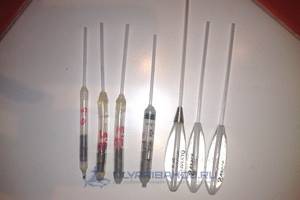
You can connect the structure together using any reliable waterproof glue.
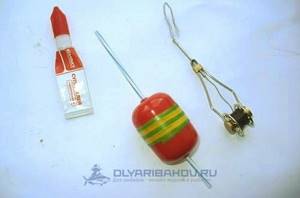
If you approach the matter without undue haste, you can make bombards for chub fishing with your own hands, which in appearance, performance and durability will not be inferior to industrially produced models.
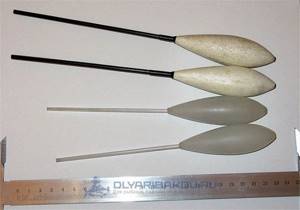
This video shows how to make a bombard with your own hands:
